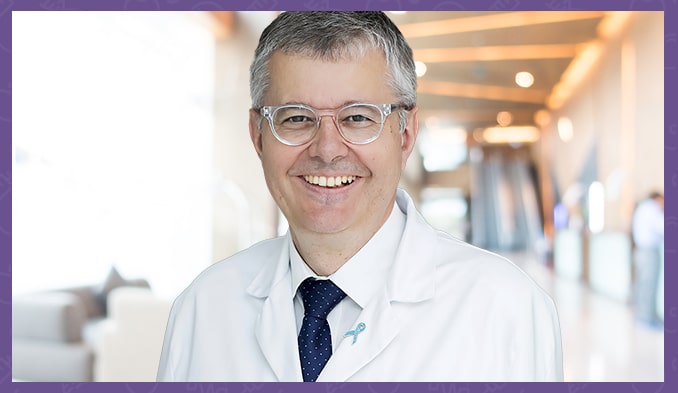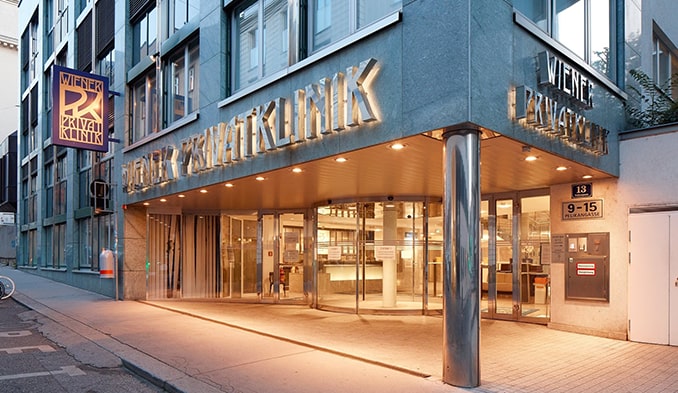Dr. Wolfgang Lloydl is a specialist in urology and robotic surgery at the Wiener Privatklinik Hospital in Austria.
-
What is a prostatectomy and what types occur?
Prostatectomy is a very common term, so a distinction should be made between "simple prostatectomy" for benign prostatic hyperplasia and "radical prostatectomy" for prostate cancer. Here we will talk about radical prostatectomy for adenocarcinoma of the prostate gland.
-
In what conditions is prostatectomy recommended? Can it be used for both malignant and benign conditions? And in which stages of cancer?
The standard treatment of benign prostatic hyperplasia is transurethral resection (TURP), prostatic enucleation with Holmium laser (HOLEP), vaporization of prostatic tissue with "Greenlight Laser" or aquablation therapy (Aquablation), etc.). As a result of transurethral resection, disease symptoms should decrease. The goal of radical prostatectomy for localized prostate cancer is to remove the malignancy in a single procedure that can be performed with a Da Vinci robot. If the cancer locally is advanced or there are affected lymph nodes, a combination of systemic therapy and surgery may also be recommended. These procedures can also be performed with the robot. If there are fewer than 5 distant metastases, surgical removal can be performed, again using the Da Vinci robot in a so-called cytoreductive environment. In these patients, systemic treatment should be administered in the pre- and postoperative period.
-
How is prostatectomy performed by robotic surgery?
Requires 4 access ports (8 mm incisions) located around the umbilicus through which
Da Vinci's robot tools are inserted. For the assistant 2 more access ports are needed. Surgical manipulations are performed through the abdomen, which is continuously inflated with carbon dioxide (CO2) at a very low pressure level (<10 mm HG).
The organs located around the prostate should be identified and the gland removed. The bladder neck and urethra are connected using stitches, and the small wounds are closed with staples. During surgery, patients are tilted at a 30-degree angle into an upside-down position.
-
What are the advantages of robotic prostatectomy?
Among the new advantages is the much better visibility over the operating field (4K, 3D). The smallest vessels and nerves can be detected. Optimal instruments are used with 6-7 times greater freedom of movement of the tip and in an extremely narrow area of the body (male pelvis). There is no wrist tremor when operating the instruments. The surgeon can operate in a relaxed position, resting his head and hands on the console to avoid fatigue. The suturing of the anastomosis can be performed perfectly.
Less blood loss and no need for blood transfusion, fewer complications during the procedure itself and less pain on the first and second day are also among the benefits. The patient is predisposed to an earlier return to normal life, earlier recovery of full continence (the ability to exert control over the bladder and bowel) without the need for tampons. This procedure allows for earlier restoration of erectile function (depending on pre-surgery status) and normal activity. Robotic prostatectomy gives the most promising results in the treatment of cancer.
-
What factors influence a surgeon's decision to recommend prostatectomy?
In most cases, there are no factors that negatively influence the surgeon's decision to perform a prostatectomy. However, limitations may be anatomic (after trauma or severe surgical interventions) or glaucomatous (intravascular pressure may be elevated).
-
What is the duration of surgery?
The operation takes on average about 2 to 2.5 hours.
-
What are the risks of robotic prostatectomy?
The overall complication rate is extremely low, and the severe complication rate is below 5%. Some of the immediate complications may be bowel injuries or transection of blood vessels. There have been no cases of ureteral or larger vessel injuries during our surgeries. In approximately 4000 procedures performed, none required intraoperative blood transfusion. In 0.5% of the cases, secondary hemorrhage was observed, and 4% had anastomosis failure, which could lead to catheter removal on day 6.
-
What is the average length of hospitalization and recovery time after robotic prostatectomy?
The entire hospitalization period takes about 6-8 days, and the recovery itself about 4-6 weeks. Patients should be well versed in pelvic floor muscle training about 6 weeks prior to the planned surgery, with training being conducted by a physiotherapist. It is also necessary to include penile rehabilitation with phosphodiesterase type 5 (PDE5) inhibitors.
-
How many prostate cancer patients are diagnosed annually in Austria and how many of them require prostatectomy?
In Austria, there are about 6,200 cases of prostate cancer each year. In 2300 of these cases, radical prostatectomy was necessary, 410 of which were performed at the hospital where I practice.
-
Has the number of prostate cancer patients in Austria increased or decreased in recent years?
Since age is the main risk factor, there has been a steady increase in the number of cases in recent years.
-
How many such operations have you performed so far?
Since 2008, I have performed over 2000 prostate surgeries, 1600 of which have been robotic.
-
Can prostate cancer be cured completely and what percentage can be cured by prostatectomy?
Currently, there is no method that guarantees 100% cure. The overall cure rate is 77% (in the range of 97-60%), which depends entirely on the stage and extent of the disease, lymph node involvement, and more. When recurrence is detected by PSA (prostate tumor marker) and there is an opportunity to respond earlier, much better long-term survival is seen in patients treated with surgery than with alternative methods.
-
Is robotic surgery for prostate cancer considered the "gold standard" in Austria? Is it also performed in public hospitals or only in private clinics?
Currently, robotic surgery is performed in less than 50% of all cases in Austria, but this percentage is starting to increase. Wiener Privatklinik has the only "DaVinci" robot of the private clinics in Austria.
-
How much does robotic prostatectomy surgery cost in your clinic?
The cost of the intervention varies and is influenced by the specifics of each case. Approximately, it can range around 25 000 euros.










